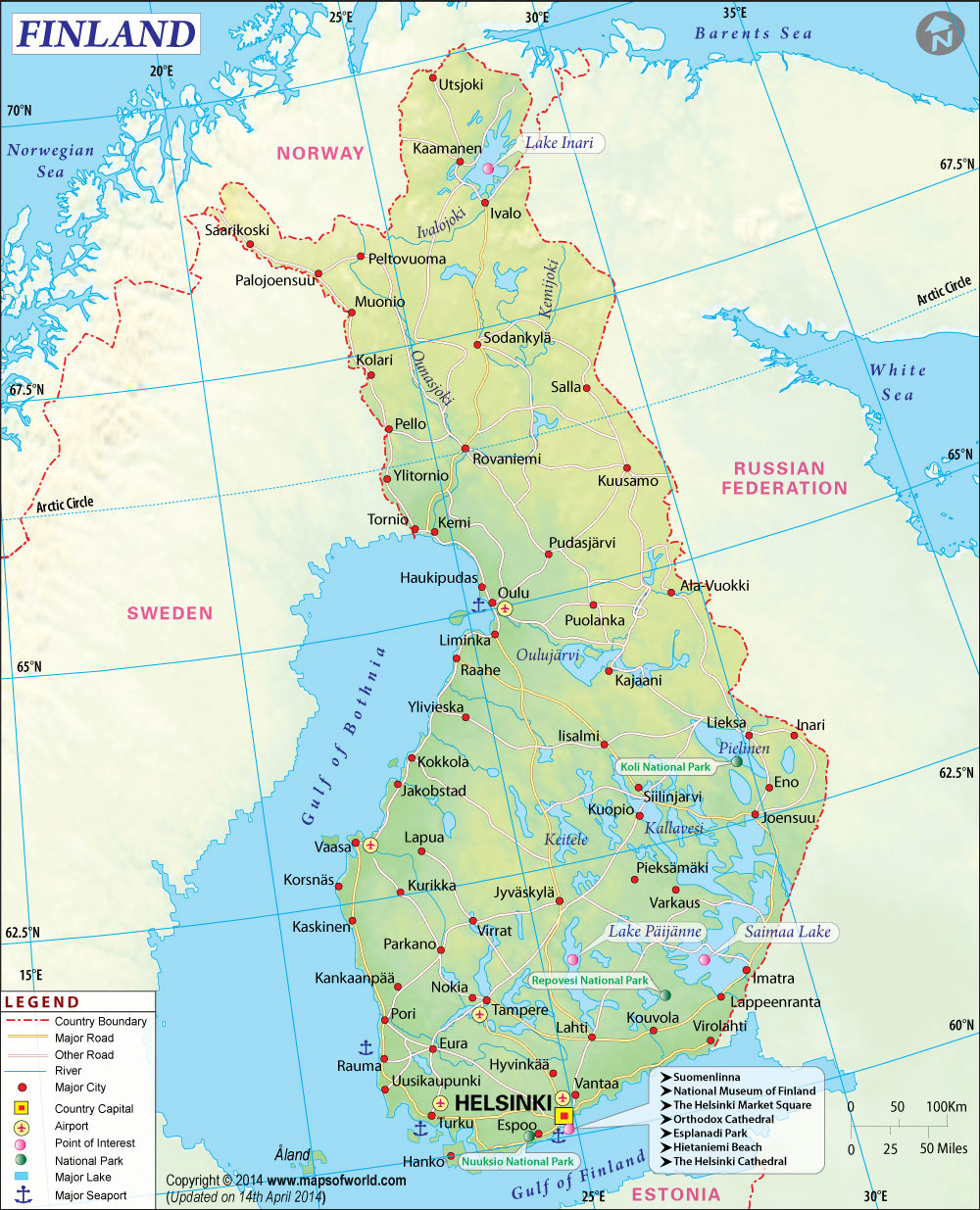Finland Map

- Finland Cities - Helsinki, Tampere, Turku
- Finland Regions - Aland Map (Ahvenanmaa), Central Finland (Keski-Suomi), Central Ostrobothnia (Keski-Pohjanmaa), Finland Proper (Varsinais-Suomi), Kainuu, Kymenlaakso, Lapland (Lappi), North Karelia (Pohjois-Karjala), North Savonia (Pohjois-Savo), Northern Ostrobothnia (Pohjois-Pohjanmaa), Ostrobothnia (Pohjanmaa), Paijat Hameen, Pirkanmaa, Satakunta, South Karelia (Etel?-Karjala), Southern Ostrobothnia (Etel?-Pohjanmaa), Southern Savonia (Etel?-Savo), Tavastia Proper (Kanta-H?me), Uusimaa
- Neighboring Countries - Sweden, Estonia, Russia
- Continent And Regions - Europe Map
- Other Finland Maps - Where is Finland, Finland Blank Map, Finland Road Map, Finland Rail Map, Finland River Map, Finland Political Map, Finland Physical Map, Finland Flag
 Wall Maps
Wall Maps